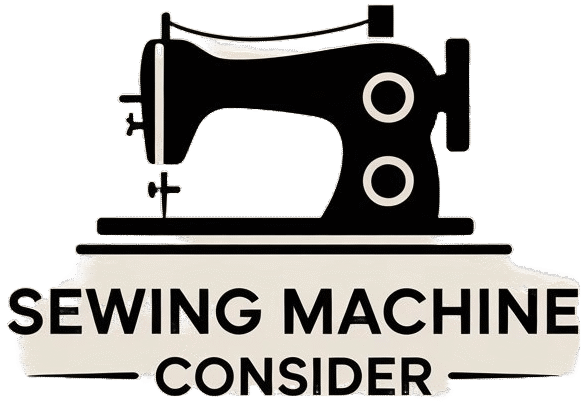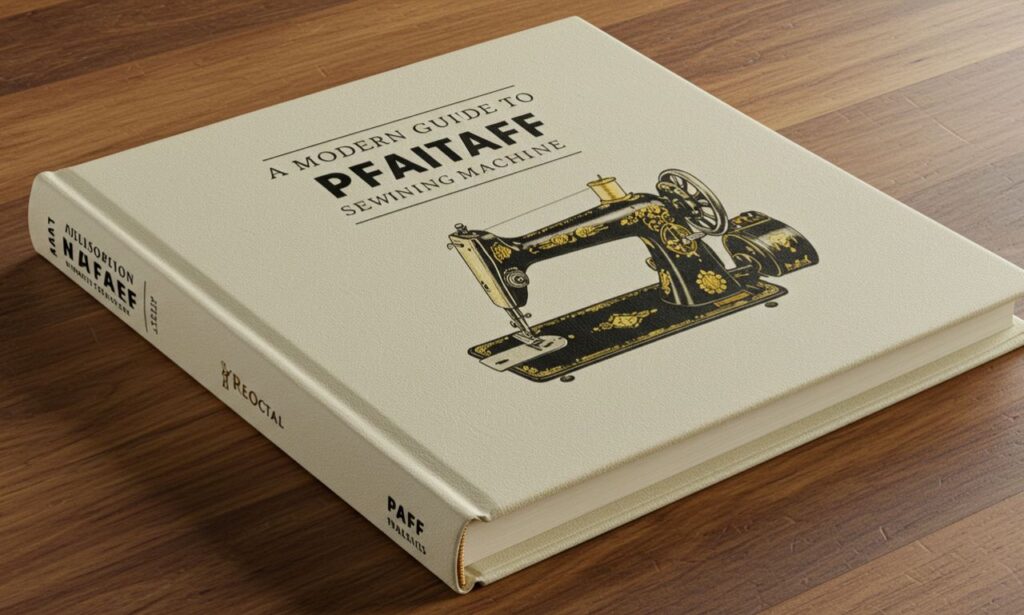In the world of sewing, a Pfaff sewing machine represents more than just a tool — it blends history, precision engineering, and innovation. Whether you’re a beginner, a quilter, or a small-business seamstress, understanding what Pfaff offers today helps you choose wisely and maintain your machine well. This article explores Pfaff’s legacy, modern models, features, pros & cons, and practical advice — in about 1,500 words — with up-to-date insights for 2025.
Pfaff Sewing Machine Heritage & Evolution
Pfaff Sewing Machine Origins
The story of Pfaff begins in 1862, when Georg Michael Pfaff in Kaiserslautern, Germany crafted his first sewing machine, originally intended for sewing leather in shoe manufacturing. In the early years, the machines were handcrafted, and the business gradually expanded its manufacturing and global export footprint.
By 1910, Pfaff had produced its millionth machine — a milestone marking both the scale and reputation of the brand. Over the decades, Pfaff introduced innovations such as zigzag stitching, industrial models, and later, computerized and embroidery machines.
In corporate evolution, Pfaff later merged into larger groups. Pfaff became part of the VSM Group (owner of Husqvarna Viking), which was acquired by Singer’s parent. Today Pfaff is under the umbrella of SVP Worldwide.
Thus, using a Pfaff sewing machine today connects you to more than a century and a half of craftsmanship and evolving sewing technology.
How Pfaff Sewing Machine Technology Has Advanced
Over time, Pfaff sewing machines incorporated features that pushed user convenience and precision:
-
IDT™ (Integrated Dual Feed) System: This is a dual fabric feeding mechanism that helps feed fabric evenly from both top and bottom. It’s a signature feature in many Pfaff machines and helps with tricky or layered fabrics.
-
Computerization & Embroidery: Modern Pfaff machines often include digital displays, stitch libraries, embroidery modules, and connectivity to software / apps.
-
Large Sewing Areas & Quilting Features: Some models are designed with extra throat space for quilting, larger bobbins, and specialized feet and attachments.
-
Customization & Stitch Creation: Advanced models may let users design custom stitches or import new stitch patterns via software.
Thanks to these evolutions, a Pfaff sewing machine today is not just mechanical; it’s a semi-smart creative tool.
Modern Pfaff Sewing Machine Models (2025 Snapshot)
When shopping for a Pfaff sewing machine today, you’ll find multiple series and tiers. Below are notable lines and their characteristics.
Core Pfaff Series & Models
-
Pfaff Expression 715 — a mainstream model combining sewing features, IDT feed, and a good stitch set.
-
Pfaff Quilt Expression 725 — focused for quilters; offers larger work area and quilting-friendly features.
-
Pfaff Creative Expression 750 — a sewing + embroidery hybrid; intended for users who want to do decorative work as well.
-
Pfaff Passport Series — portable machines for sewists who travel or need compact solutions.
-
Pfaff Ambition / Ambition Quilt — mid-range machines balancing cost and features.
-
Pfaff Creative Icon 2 — high end, feature-rich machine with advanced capabilities.
-
Pfaff Serger / Overlock / Coverlock models — to finish edges, sew stretch fabrics, or do professional hems.
Prices across models vary widely depending on features. For instance, some mid-tier models cost in the thousands of USD in certain markets.
What to Expect in 2025 Models
Modern Pfaff machines often come with:
-
Touchscreens or LCD panels
-
USB or Wi-Fi connectivity
-
Stitch libraries with hundreds of patterns
-
Enhanced feed systems (like IDT)
-
Embroidery modules or upgrade paths
-
Strong factory support, manuals, and accessory compatibility
Whenever you check a Pfaff sewing machine in 2025, verify that its firmware, parts, and software support are still active in your region.
Key Features to Look for in a Pfaff Sewing Machine
When evaluating a Pfaff sewing machine, certain features can make a big difference in usability and longevity.
IDT™ (Integrated Dual Feed)
A major hallmark of many Pfaff models, IDT ensures fabric is fed evenly from top and bottom. This minimizes puckering or shifting, especially when sewing multiple layers or difficult fabrics like knits or slippery silks. It’s one of the features that can justify choosing a Pfaff over some competitors.
Stitch Variety & Customization
More stitches and the option to combine, modify, or create your own gives greater flexibility for creative sewing. A base set of useful stitches (zigzag, stretch, decorative) is important. Advanced versions allow importing stitches via software.
Work Area & Throat Space
If you plan to quilt or work large projects, ample throat space (distance from needle axis to machine body) is crucial. Some Pfaff models are built for quilting with extended beds.
Embroidery Capabilities
If you want embroidery, check for hoop size, pattern library, USB import, and stability during stitch-out. Some Pfaff machines are pure sewing, some are hybrid.
Durability, Motor & Build Quality
Metal frames or sturdy construction yield better stability. A good motor can manage thicker fabrics (denim, canvas). Pfaff’s heritage often carries over into engineering quality.
Service, Parts & Support
Because Pfaff is a premium brand, having local service centers, spare part access, and support is essential. If your country lacks Pfaff service, even a superb machine may become a frustration.
Pros & Cons of Using a Pfaff Sewing Machine
Advantages of Pfaff Sewing Machine
-
Precision & reliability: Pfaff is known for consistent stitch quality and engineering excellence.
-
Strong heritage & reputation: Backed by decades of experience and a long history.
-
Innovative features: The IDT feed, stitch programming, hybrid functions distinguish Pfaff models.
-
Upgrade paths: Many models can be enhanced with accessories or embroidery modules.
-
Brand support / community: Users often share tips, parts, and tutorials for Pfaff machines.
Challenges or Drawbacks
-
Cost: Pfaff machines are often more expensive than entry-level brands.
-
Complexity: Advanced features have steeper learning curves, especially for novices.
-
Service limits: In some regions, parts or maintenance may be harder to find.
-
Firmware / software aging: As technology evolves, older models may lose software support.
-
Overkill for simple tasks: If you only need basic straight stitching, some features may go unused.
How to Choose the Right Pfaff Sewing Machine for You
To pick the right Pfaff sewing machine, ask yourself several questions:
-
What is your skill level?
Beginners might prefer simpler models; advanced users may prefer full feature sets. -
What do you plan to sew?
-
Clothing or garments → flexible models
-
Quilting → machines with wide beds
-
Embroidery / decorative work → hybrid or embroidery models
-
-
How much space do you have?
Larger machines need room for extension, bobbin changes, storage. -
Is local service available?
Check whether Pfaff service centers or technicians operate in your area. -
Future scale
Do you foresee upgrading to embroidery or specialty work? Choose a model with expansion options. -
Budget vs value
Sometimes paying more upfront yields years of reliable service and fewer frustrations.
By matching your intended use to machine features and making sure support is available locally, you maximize satisfaction with your Pfaff sewing machine.
Tips for Using & Maintaining a Pfaff Sewing Machine
To get the best from your Pfaff sewing machine over its life, consider the following practices:
-
Clean & oil regularly: Remove lint, dust, stray threads; oil as recommended in manual.
-
Use quality thread & needles: Cheap supplies cause tension, skipped stitches, damage.
-
Test before sewing your final fabric: Use scraps to dial in settings.
-
Keep firmware / software up to date: If your model supports updates, apply them.
-
Store in dry, dust-free environment: Cover the machine when idle.
-
Follow the manual: Maintenance intervals, part replacement, and service schedule matter.
-
Seek professional servicing when needed: Annual checkups can catch small issues before they escalate.
These habits help protect your investment in your Pfaff sewing machine.
Pfaff Sewing Machine & Market Trends in 2025
In 2025, a few trends influence Pfaff’s position and features:
-
Smart / connected sewing: More machines support USB, Wi-Fi, or cloud stitch libraries.
-
User interface improvements: Touchscreens, intuitive menus, and voice or gesture integration may expand.
-
Integration into maker / DIY ecosystems: Downloadable pattern markets, sharing, and networks could grow.
-
Emphasis on longevity & repairability: As sustainability gains attention, brands like Pfaff with durable machines may gain favor.
-
Hybrid machines: Sewing + embroidery + potentially even light automation becoming more common.
So, buying a Pfaff sewing machine now means you’re likely investing in a platform that can evolve with your needs.
Final Thoughts
Choosing a Pfaff sewing machine is about blending tradition with modern utility. You gain a lineage of craftsmanship, advanced features, and upgrade pathways — but you must ensure that service, parts, and support are available in your region. For serious sewists, quilters, and creative makers, Pfaff provides durable tools built to grow with your skill and projects.



